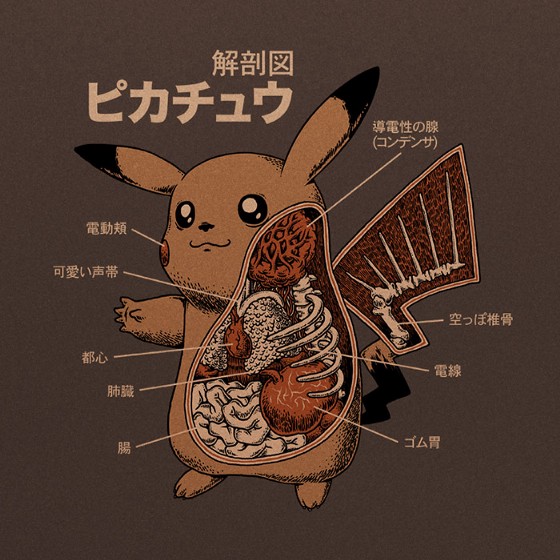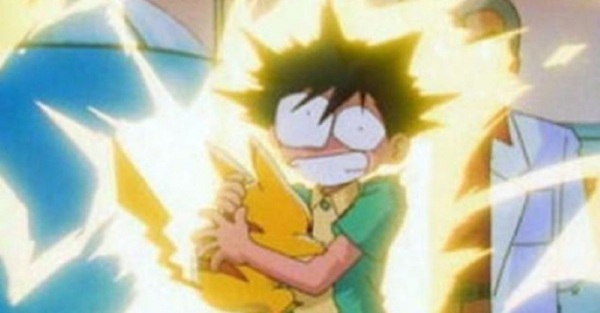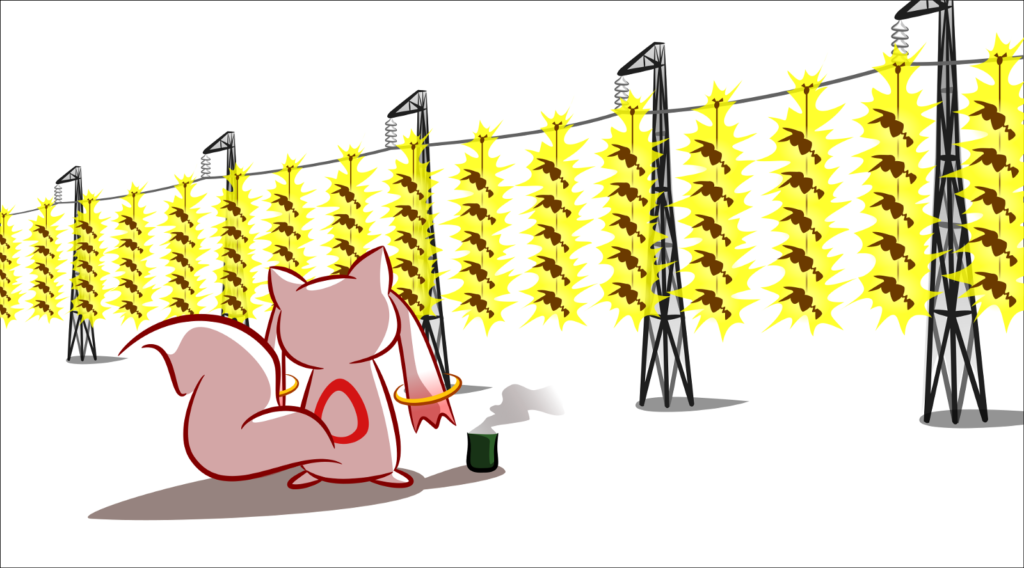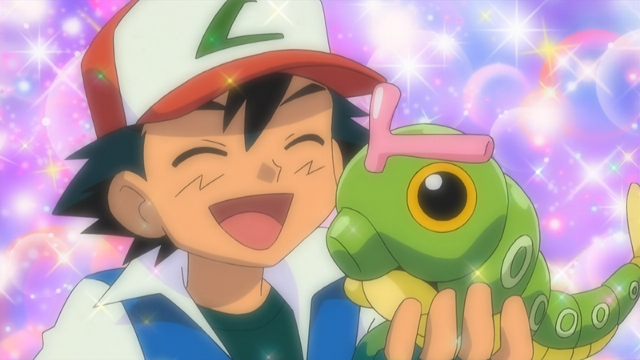A Preliminary Assessment of Pikachu as a Renewable Energy Source
Could Pikachu be the answer to all our energy problems?
Written by Daniel Chen
May 25, 2020

Introduction
The specter of global warming has pushed the world to seek sustainable, low carbon energy sources. One such energy source that has been well known among the public since the late 90s, but until recently has received little attention, either from academia or industry, is pikachu.
There are many reasons to consider pikachu as an energy source. Chief among these are their low emissions of greenhouse gasses and their family-friendly image. However, the absence of p̶i̶k̶a̶c̶h̶u̶ ̶I̶R̶L technical literature and industry experience remain the dominant obstacle for realizing pikachu energy. Below we present a preliminary assessment of pikachu as a source of renewable energy.


Known biological properties of pikachu
Pikachu (Ochotona sternutationis) is a mouse with yellow fur, roughly the size and shape of a hare, known for their liking of tomato ketchup. Pikachu are well known for storing and discharging substantial amounts of electrical energy from red patches on their cheeks. The exact physiological mechanism for this is unclear.
Discharge phenomena of pikachu goes by many names. One of those, “thunderbolt”, is known in Japanese as “ 10まんボルト”, which would indicate an electric potential of exactly 100kV. “Thunderbolts” from pikachu are well known to cause paralysis and loss of consciousness, but notably not burns, thus putting the current in the ~100mA range. These discharges can be sustained for about 5 seconds, and may be used 15 times between rests.
10 year old child definitely not getting burned by 100mA discharge from Ochotona sternutationis.

Resting is required to recover health and “power points”, and typically done in specialized hospitals known as “Pokemon Centers”, though it is known that ordinary mattresses will do just fine. Up to six pikachu may share a mattress simultaneously. Rests are short, and typically take only 3 seconds. Pikachu are not known to require sleep; their electrical discharge capability is also not known to be dependent on time of day.
Pikachu for power generation
Here, we compare the advantages and drawbacks of using pikachu as small scale home generating systems versus as a large-scale grid energy source. It is found that challenges exist for using pikachu in the home that don’t apply when they are used instead for grid-level generation.
Pikachu as home power source (picture by me)

Pikachu for home generating systems
100kV at 100mA means that each pikachu is capable of generating 10kW of electric power, enough to boil 8 kettles of tea simultaneously, and almost enough for an average British household. This, along with their cuddly appearance, as well as the widespread availability of tomato ketchup as a source of fuel, means that there may be potential for pikachu in home generation systems.
Nevertheless, problems arise due to pikachu only being capable of generating power in 5 second bursts, so batteries must be used to store excess energy and even out intermittency. Reports of seizures and witchcraft among small children in close proximity to pikachu have raised questions about their safety. In addition, many home appliances are not rated for 100kV DC power.
Witchcraft from Sternutationis exposure. Seriously, this kid hasn’t aged a day in 20 years!

All in all, while tempting as a home generation power source, various technical challenges and health risks need to be addressed before pikachu may be used in home generation. It remains to be seen if improvements in power storage and conditioning technology, as well as protective spells for children, will make pikachu a viable option for future home owners.
Pikachu as grid-scale energy source
Pikachu shows great promise as a grid-scale energy source. 100kV is close to those used in HVDC transmission lines, and thus pikachu may be directly integrated into existing grid infrastructure without additional converter stations. Fluctuations due to discharging in 5 second bursts can be smoothed out by using several pikachu in parallel.
We propose the following as a standard pikachu cell: 132 pikachu, sharing just one mattress between them, organized into 22 groups of 6. Nominally, one group will rest on the mattress while the other 21 groups discharge electricity directly into an HVDC transmission line, with the 22 groups rotating continuously. Since each pikachu generates 15, 5-second bursts per 3 seconds of rest (a 21.7 : 1 ratio), such an arrangement will ensure continuous, optimal use of the mattress (which, as we shall see, is the most expensive component of such an arrangement).
One pikachu cell can generate 1.32MW of peak power, comparable to a single wind turbine. However, while wind power typically have a capacity factor of ~30%, a pikachu cell has a capacity factor of over 95%, far higher than any renewable energy source. Cells can be further organized into g̶u̶l̶a̶g̶s batteries comprised of some 760 cells with a 1GW capacity, comparable to fossil fuel and nuclear power stations.
Economics of Pikachu for power generation
Because pikachu may be integrated into existing grid infrastructure at scale without requiring additional hardware for power conditioning, capital costs are reasonably easy to estimate. On the other hand, the lack of quantitative data on the metabolism of pikachu make estimating running costs difficult. We present our estimates in the following section.
Capital costs
Somewhat surprisingly, the capital cost of pikachu power generating systems does not include the cost of pikachu themselves, since they can be legally a̶b̶d̶u̶c̶t̶e̶d obtained from the forests of Viridian in the Kanto region. Instead, the cost mostly comes from the special containers used in their capture, as well as the mattress shared in each pikachu cell.
Special containers for pikachu are manufactured by Silph Co. under the brand name “Pokeball”. Each pokeball has a catch rate of 32.5% when used on a pikachu at full health. Pokeballs cannot be reused following a failed attempt at capture. Capturing one pikachu on average thus takes 3.08 Pokeballs.
Pokeballs are widely available from shops and department stores, and are sold at exactly the same price as bottled water, which average $1.45 in the US. Acquiring one pikachu will therefore cost $4.47; a full cell of 132 pikachu will cost $590. Add to that one mattress per cell (averaging roughly $1000 each), and the cost of one pikachu cell comes to $1600.
With a peak power of 1.32MW, the overnight cost of a pikachu cell works out to be $1.2/kW, literally orders of magnitude cheaper than the next cheapest option (gas-fired power plants at $1000/kW). A 1GW pikachu battery will cost just $1.2 million. Matching the entire generating capacity of the US (around 1.1TW) will cost just $1.3 billion, less than one single nuclear power plant!
Pikachu as grid energy source (picture by me)

Running cost
The running cost covers mostly fuel in the form of tomato ketchup, as well as perhaps waste treatment.
Food consumption rates for pikachu have not been well documented. However, assuming that Klieber’s Law holds for pikachu, and assuming pikachu are placental mammals (despite apparently laying eggs…?) weighing 6 kg, their calorific intake would be around 400 kcal per day. Tomato ketchup provides about 100 kcal per 100 g at a cost of around $3/kg, which works out to $1.2 per day, per pikachu.
Estimating the cost of waste treatment is rather more challenging. Manure is actually a source of revenue for cattle ranches. However, the discrepancy between the daily calorific intake vs electrical output is strong evidence that p̶i̶k̶a̶c̶h̶u̶s̶ ̶d̶o̶n̶’̶t̶ ̶e̶x̶i̶s̶t̶ there are nuclear processes in the metabolism of pikachu, which would make their fecal matter nuclear waste. On the other hand, the forests of Viridian are not (yet?) a radioactive wasteland, suggesting that disposal of the waste should not pose a significant environmental hazard. We will thus take a neutral stance and ignore the cost/revenue associated with waste disposal
Indeed, Viridian Forest is known to be so benign to life that caterpillars routinely grow up to 2.9kg!

From calculations made in previous sections, a single pikachu can generate 10kW at 95% capacity factor, generating 230kWh (825MJ) of electrical energy per day with $1.20 running costs. This works out to 0.52¢/kWh, or $5.2/MWh, roughly one tenth the cost of natural gas. Again, this estimate does not include the potential revenue (or liability) associated with pikachu waste streams.
Conclusion
Our preliminary analysis suggests significant potential for the wide-scale deployment of pikachu (Ochotona sternutationis) as a renewable, grid-scale energy source. Some potential benefits of pikachu are:
-Low carbon and renewable: runs on tomato ketchup.
-Simple to integrate into existing infrastructure: comparable to HVDC transmission cable.
-Highly reliable: capacity factor over 95%.
-Extremely low capital costs at $1.2 /kW (compared to $1000s/kW for alternatives)
-Low operational costs: $5.2 /MWhr, one 10th that of competing technologies
Seizure and witchcraft risks among children, as well as the economics of waste treatment require further study to ensure the safety and effectiveness of pikachu as a future energy source.
Some may raise ethical objections about basing energy infrastructure on the prolonged suffering of hundreds of millions of sentient beings. Such objections are highly irrational. Science don’t care about your feelings! Worrying about pikachu rights in the face of climate change is being too simple, sometimes naive. Significant efforts must be made as soon as possible to acquire pikachu in sufficient quantities. Put simply, we’ve Gotta … gotta … what’s that phrase again?

